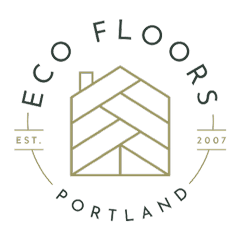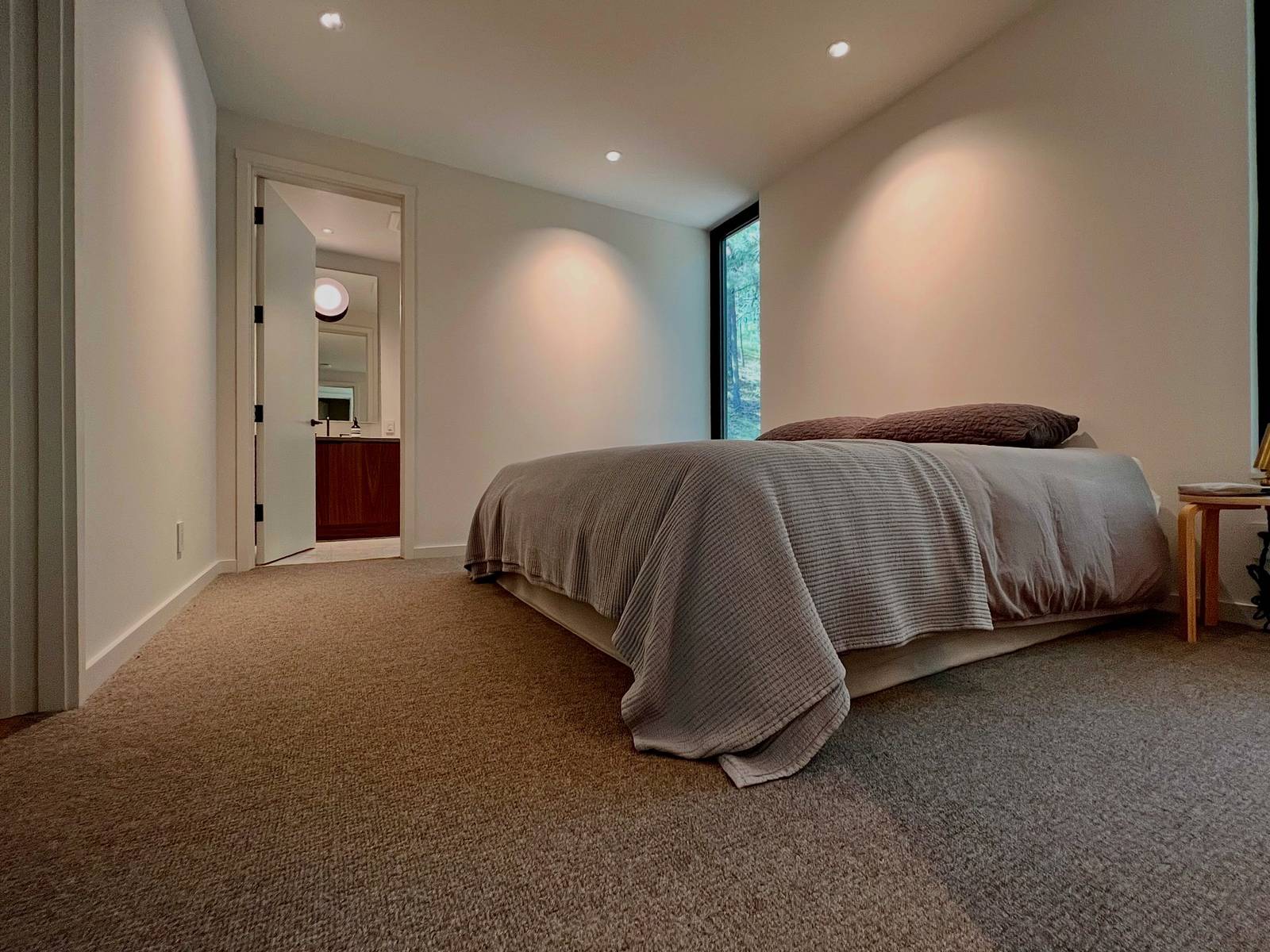Table of Contents
Understanding Carpet
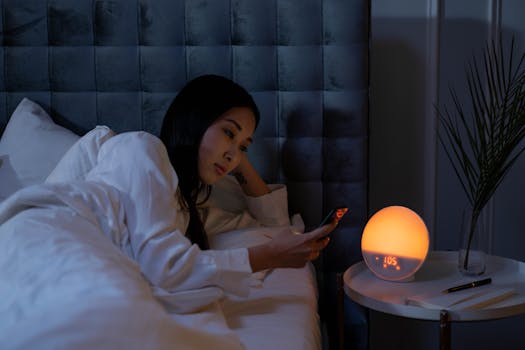
You’re finally here. You’ve decided it’s time to get new flooring for your bedroom(s), and you’ve picked carpet. A while back, you began dreaming about getting out of bed and feeling that soft, cushiony tickle of beautiful new carpet. You can practically smell the freshly installed materials as you lay back and drift off to sleep…
However, choosing the best carpet for your bedrooms can be overwhelming. Don’t worry. Unlike many of other posts you’ve read, this one was written by someone who operates a flooring showroom and handles installations. It was designed to address real customer concerns, and thoroughly educate you on the things that really matter when you go to buy your own carpet. If you stay to the end, we’ll even suggest some of our favorite brands. Let’s begin!
Bedroom Carpet Types
- Wool (natural)
- Nylon (synthetic)
- Polyester (synthetic)
The first step in your carpet buying journey is to realize that carpet is made from different types of fibers:
We recommend you stick to these fibers because they’re the most common types found at flooring stores, so this will keep communication with the staff simple. Other natural fibers, such as jute, sisal, and seagrass will be too scratchy and uncomfortable for bedroom use. Additionally, you may encounter blends of fibers, which are also good options, just be sure the main fiber is either wool, nylon, or polyester. Later, we will examine the differences between these fibers. (Jump to this)
Bedroom Carpet Styles
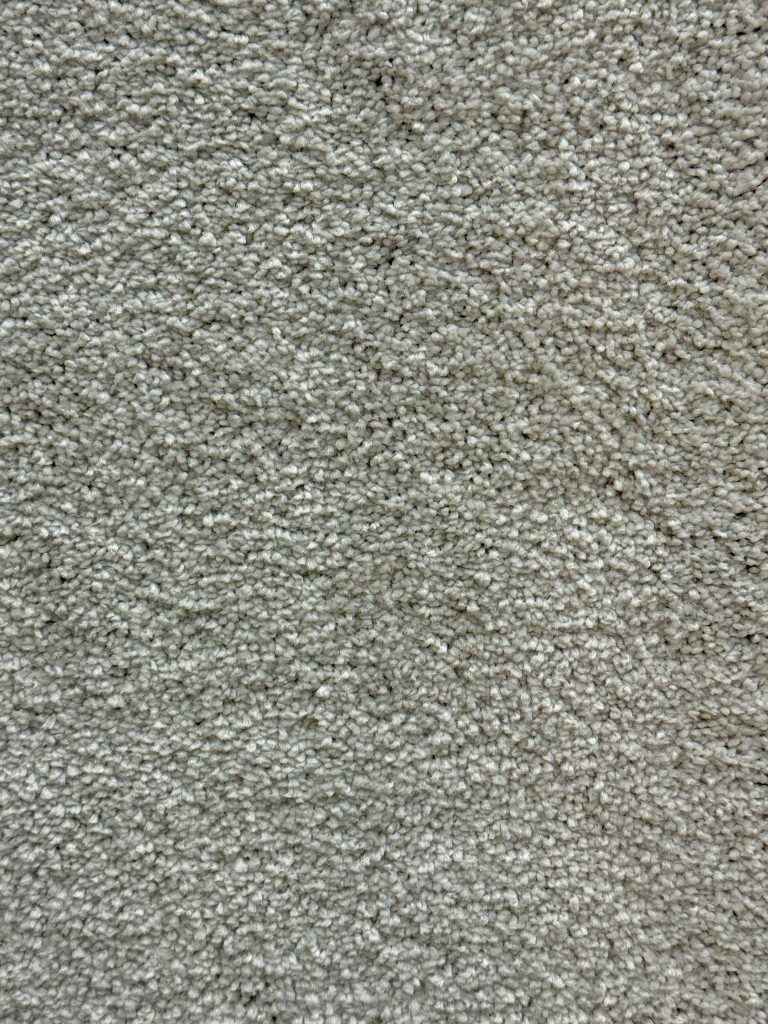
Cut Pile: The yarn loops of carpet are cut at the top so that each strand of carpet appears individually, and stands upright. There are styles of cut pile like saxony, and twist (or frieze). Don’t stress over the differences. Pay attention to their appearance and feel, and pick whichever you like best.
- Cut pile crushes easier than loops
- Most commonly made of nylon, or polyester
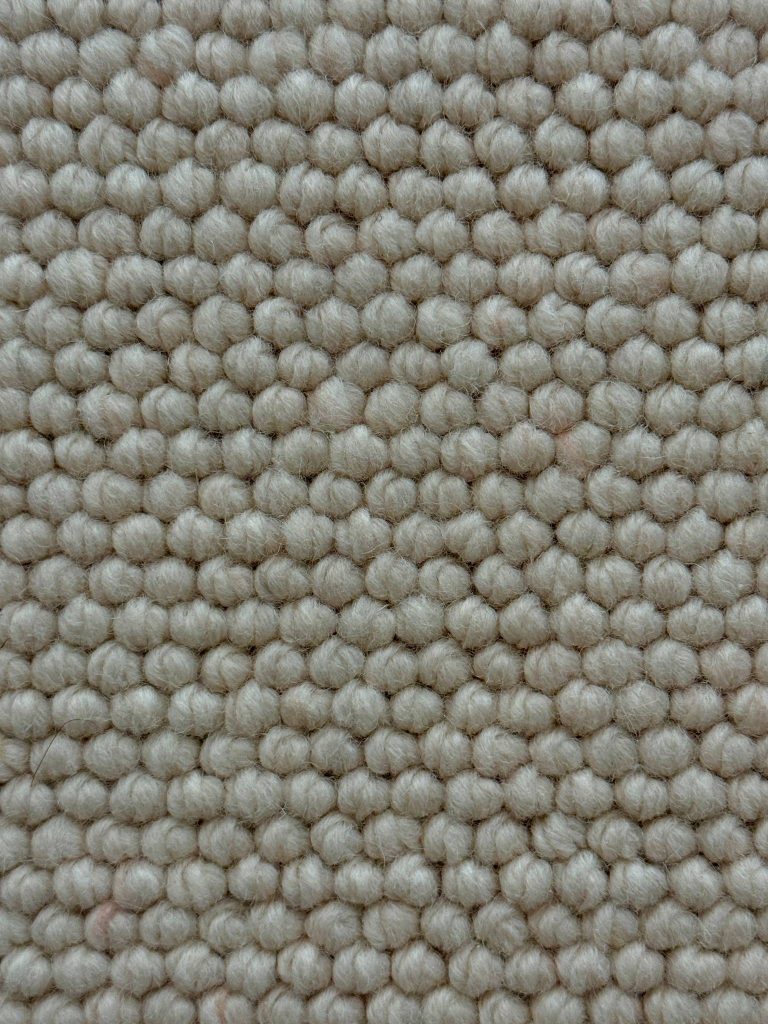
Loop: Also known as berber. Instead of trimming the carpet during manufacturing, the whole loops are left intact. Berber is usually characterized by tighter, lower cut loops.
- Most commonly made of wool
- Loops snag easier than cut pile
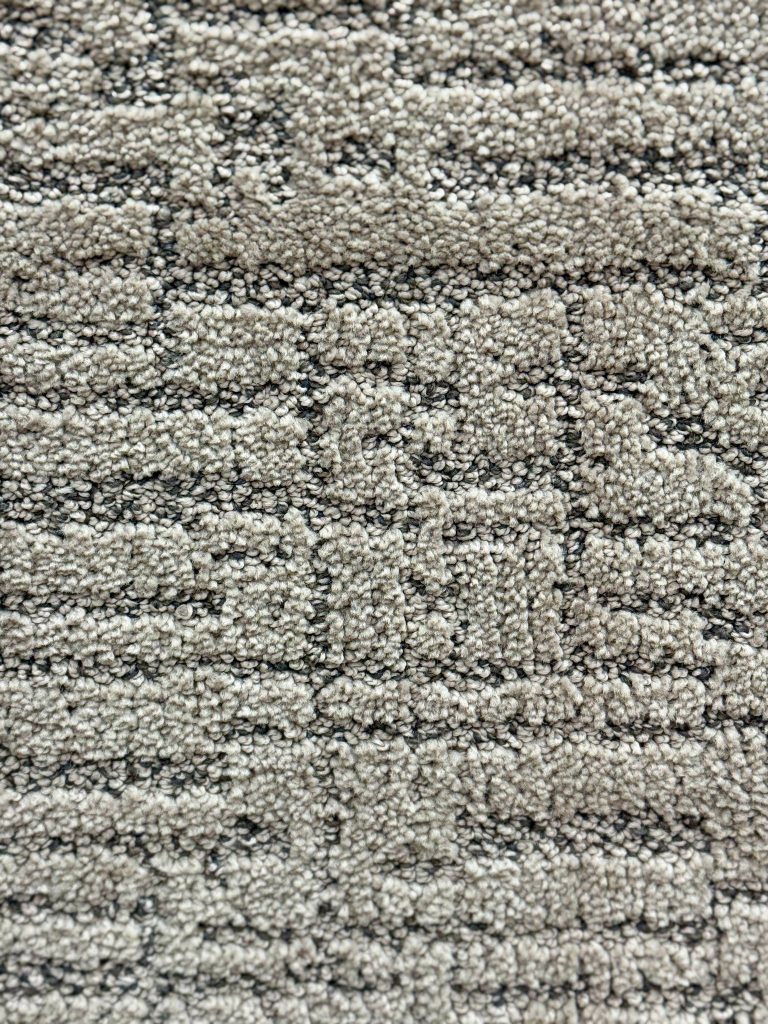
Mix of Cut Pile & Loop: a mixture of the two carpet fibers will form patterns and textures. This is often referred to as Textured Carpet. Textured carpet will often have varied fiber heights.
- Most commonly made of nylon, or polyester
- May be more difficult to clean
There are more styles of carpet construction, such as flatweave or hand woven. We feel these styles are not well suited for bedroom carpet because of their lack of comfort.
Bedroom Carpet Pile Height
Pile is another word for the fibers on a carpet’s surface (this excludes the carpet backing). Pile height is one way to add more yarn to each carpet fiber, thus increasing overall comfort. Let’s categorize pile heights:
- Low – ¼” or less
- Medium – ¼”- ½”
- High – ½” +
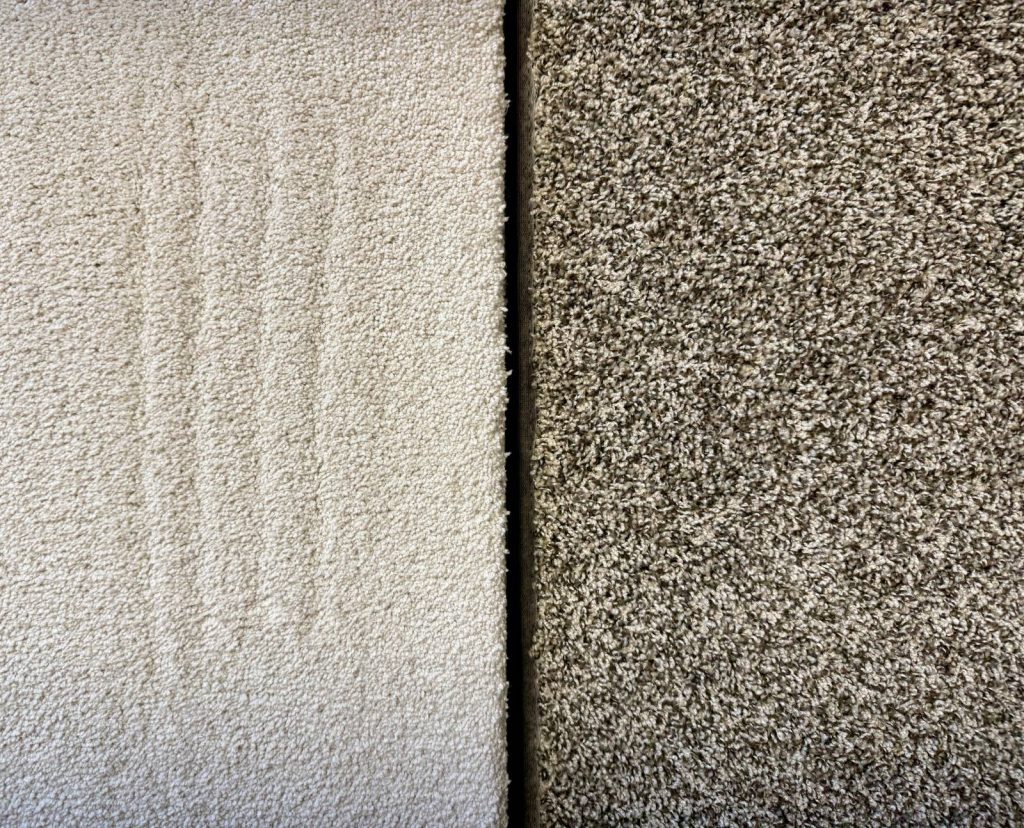
Same Brand
Left: thick, high pile carpet
Right: thin, low pile carpet
Bedroom Carpet Pile Density
Have you ever felt carpet and thought to yourself “this feels cheap”? You may have been feeling a low density carpet. Carpet density is the measurement of carpet fibers per square inch. However this will not commonly be displayed. Rather, brands will most often display “face weight” or “pile weight”. Pile weight is the weight of the yarn used in a square yard of carpet. This is the simplest way to determine a carpet’s density.
Carpet density matters because it’s the second way more yarn is added to individual carpet fibers, which increases carpet comfort. More importantly, denser carpet fibers offer more support to each other. This prevents against compacting.
Increasing Carpet Pile Height & Weight
- Pros: Increased comfort, and sound proofing to improve.
- Cons: Increase in price. With higher pile height, there’s more space to compact (more prone to crushing), and it’s harder to maintain because dirt and allergens will get trapped deeper in the carpet.
Verdict
With bedrooms, comfort is the name of the game. In speaking with our customers, most prefer medium pile carpet. They find it is very comfortable, while also being easy to vacuum. The best density for bedroom carpet is between a 45-55 oz pile weight. This density strikes the best balance of price with comfort, durability, high end appearance, and sound proofing. Since you can find these attributes in any of the discussed styles, we’ll leave picking a style up to you.
Personal Preferences For bedroom Carpet
At this point, you should be aware of your options. We’ve also established that a medium pile height, and 45-55 oz pile weight are the best choices for bedroom carpet. We still need to choose a fiber type, that is wool, nylon, or polyester. Let’s consider several factors before making our selection.
Who’s using the bedroom?
Bedrooms are usually low traffic, low spill areas. But we think you should select Nylon or Polyester carpet if your family includes:
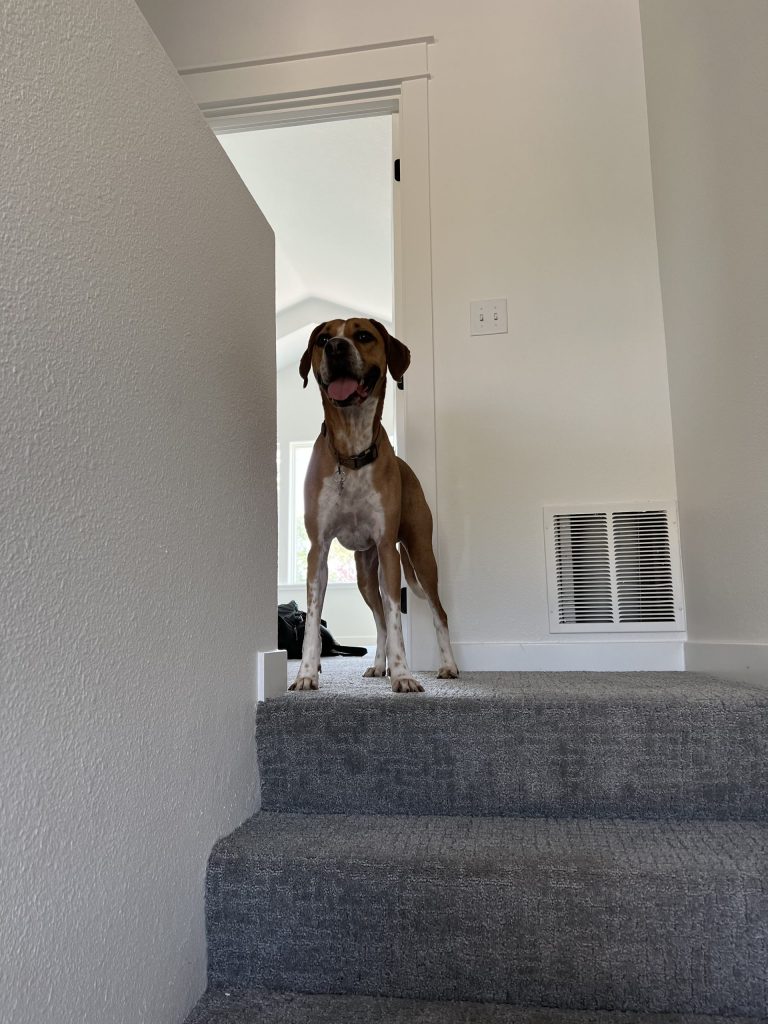
Young children or toddlers: Toddlers will not only use their rooms for play, but they will also have accidents, spills, falls, and they’ll find ways of causing damage you can’t even think of. Synthetic fibers handle stains better than natural fibers like wool, and they’re usually softer. This means your child can enjoy the feel of the carpet as they crawl around and you can be less worried about the carpet getting damaged.
Pets: Dogs and cats love to stretch, scratch, roll around, and get the zoomies (insert link). We’d recommend you choose a nylon or polyester carpet for their stain and abrasion resistance. Wool carpet has a tendency to shed (insert pic or link) and pets will increase this. Wool carpet is commonly made in the loop style. Pet claws can snag on these loops and dislodge them over time.
OUR PICK
Any of the carpet fiber types we’ve discussed are good choices. But if you have young children and pets, opt for a nylon or polyester.
Trick: Pick a speckled carpet to hide dirt and stains better.
Appearance
To recap, wool carpet is most often made with loops, while nylon polyester polyester are most often made with a cut pile, or a mix of loop and cut pile (textured carpet). Here are a few more considerations.
Color: Wool carpet usually comes with a natural pallet since most customers prefer undyed to limit chemical usage. This means fewer color choices, usually 6-8 options per carpet. Nylon or polyester comes dyed and will offer many more. For instance, Mohawk Smart Strand has 66 color choices.
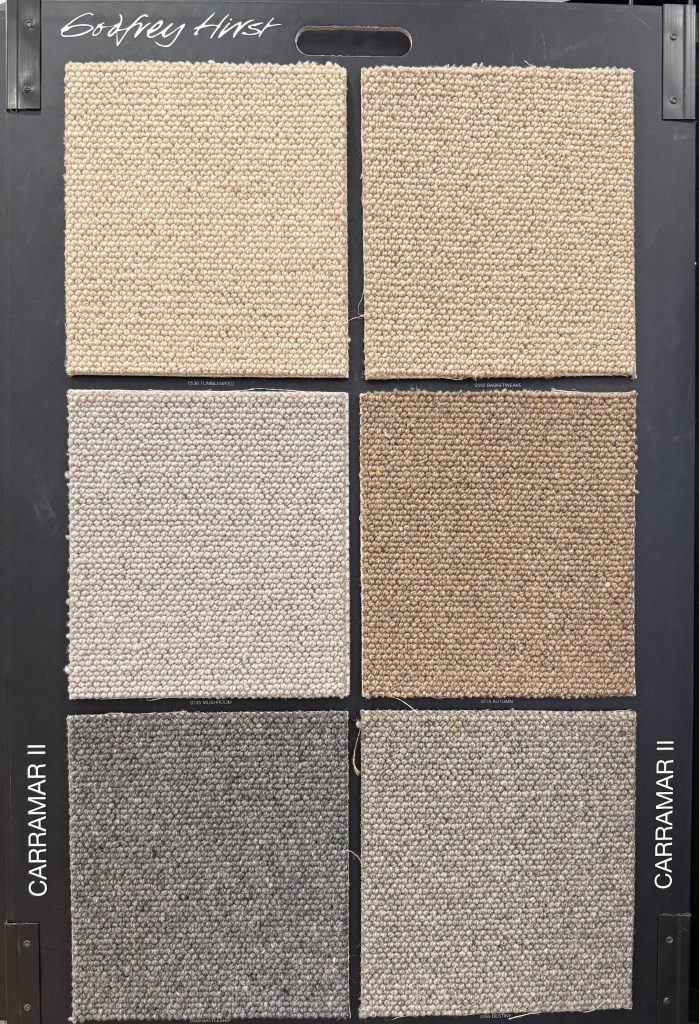
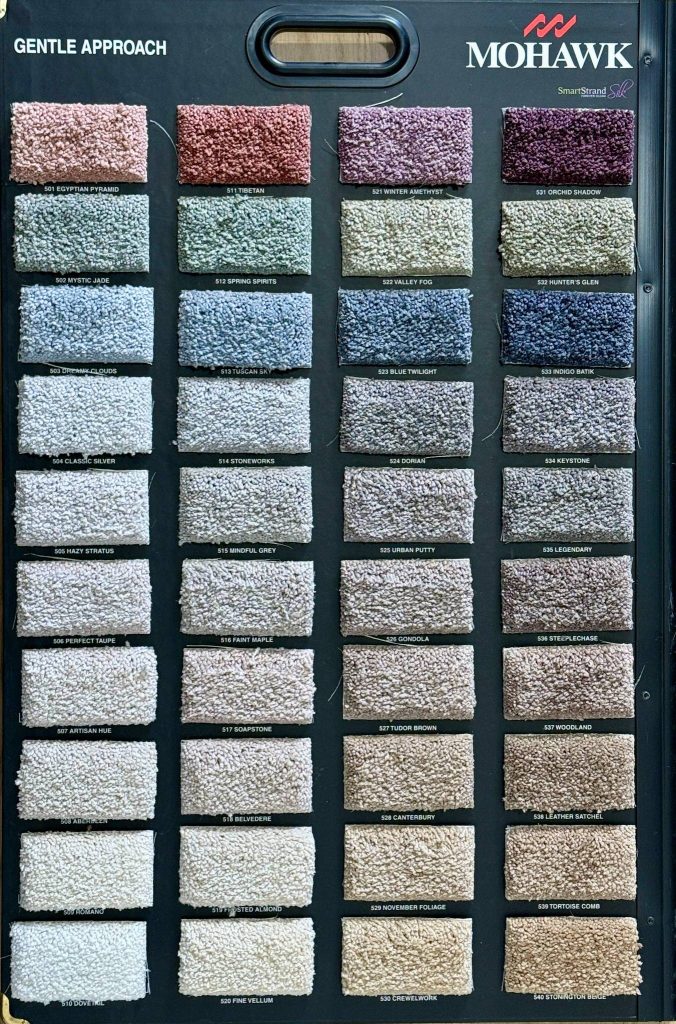
Patterns & Textures: All three carpet types have textured carpets options, as well as patterns. Patterns will generally increase the cost of the job because more materials will be required to match the pattern up during install, in order to make the pattern appear seamless.
Seams: a carpet seam is created anytime a room is wider than a roll of carpet, and two or more rolls of carpet have to be joined to cover the room width. Without offering a detailed explanation, know that patterned carpets and wools are the most difficult to seam. For all types of carpet, the shorter the pile and the lower the density, the harder it will be to make the seam less visible.
X factor: Our customers consistently report to us that wool has a more “luxurious” look to it. Several factors contribute to this, perhaps the largest being it’s loop construction.
OUR PICK
Slight edge to wool. This is largely subjective. To keep this simple ask yourself – Do I like loop, or cut pile? Is having lots of color options important to me? Do I want something a bit more unique?
Price
Here’s what you might pay for a quality carpet, based on fiber type:
- Least expensive: Polyester – $30/square yard ($3.33/square foot)
- Medium priced: Nylon – $60/square yard ($6.66/square foot)
- Most expensive: Wool – $80/square yard ($8.88/square foot)
Remember, this is just for the carpet. This does not include, pad, freight, or install. Also, this is median pricing based on products that fit the other characteristics discussed throughout this article.
OUR PICK
Polyester. Since polyester shares many similarities to nylon, we feel the cost savings makes it the clear winner.
Comfort
Comfort is largely determined by the pile height and density. But the fiber type also contributes to it, namely in softness. Let’s rank them by softness:
- Polyester (look for Triexta or PET)
- Nylon
- Wool
OUR PICK
Polyester.
Durability
Carpet durability refers to how well a carpet retains its shape, density, and color. We previously discussed that density and pile height are very important for durability. Let’s consider 4 factors related to fiber type that affect
Shape – a commonly used term in carpet is “resilience”. This means, how well does the fiber spring back to original height/shape and resist compacting?
- Wool
- Nylon
- Polyester
Density – Which carpet type retains most of their fibers? That is more of a construction question, and the answer is loop, so maybe the edge goes to wool. Which fiber retains more of their fiber weight? Note, wool is fighting a 2 front battle against moths and shedding.
- Nylon
- Polyester
- Wool
Color – which fiber will hold its color the longest? Wool’s color is inherent, meaning it naturally stores its color unless dyed. Synthetic carpets are commonly dyed. So the dying process affects how well the carpet keeps its color. Look for Solution dyed carpet when you can find it (insert link). Still, polyester absorbs dye better, and fades less from UV light, than nylon.
- Natural Wool
- Polyester
- Nylon
Stains – Polyester fibers contain stain blockers (as do nylon), and the surface of them is hydrophobic, meaning they repel water. Nylon carpet, however, is hydrophilic, meaning its structure absorbs some water. Wool will also absorb water, and is generally treated with no stain blockers.
- Polyester
- Nylon
- Wool
OUR PICK
A carpet’s appearance is most affected by stains, so this gives the edge to polyester. Wool maintains its shape the best. But the carpet that does everything durably is nylon.
Eco Friendliness
Our final consideration is how the carpet you choose will affect your bedroom’s air quality and how sustainable it is – we call this eco friendliness.
Wool: is a natural product that is usually minimally processed so it has very low emissions of VOC’s (Volatile Organic Compounds). It also acts as an air purifier by absorbing and trapping other pollutants emitted from other household products, and it regulates humidity by absorbing moisture from the air. As for sustainability, wool grows on sheep, making it 100% renewable. We’ve already discussed that it has high durability, but know that when it’s at the end of its life, it is biodegradable.
Polyester & Nylon: When choosing a synthetic option for your bedroom carpet, the easiest way to ensure it will have low voc emissions is to look for a CRI green label, OEKO-tex, or equivalent rating. As for sustainability, both nylon and polyester do not recycle well. So much of their sustainability will depend on how long a homeowner is able to use their carpet. Some brands will focus on sustainability during manufacturing. These are generally well known brands with a large public audience. Mohawk, for example, is aiming to be carbon neutral by 2040, and many of their products are already 5% carbon offset. Their PTT triexta fibers are made of up to 37% annually renewable plants. Learn More
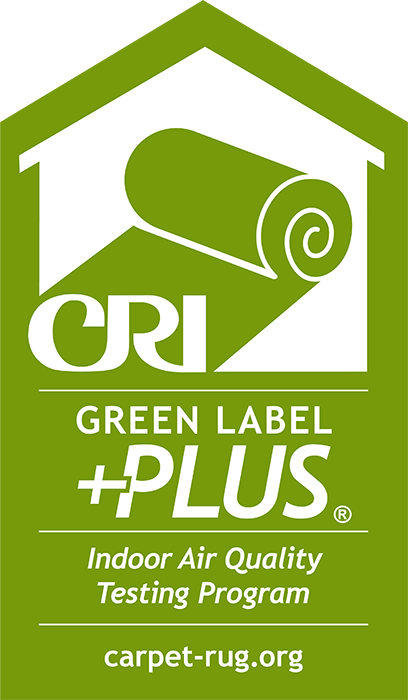
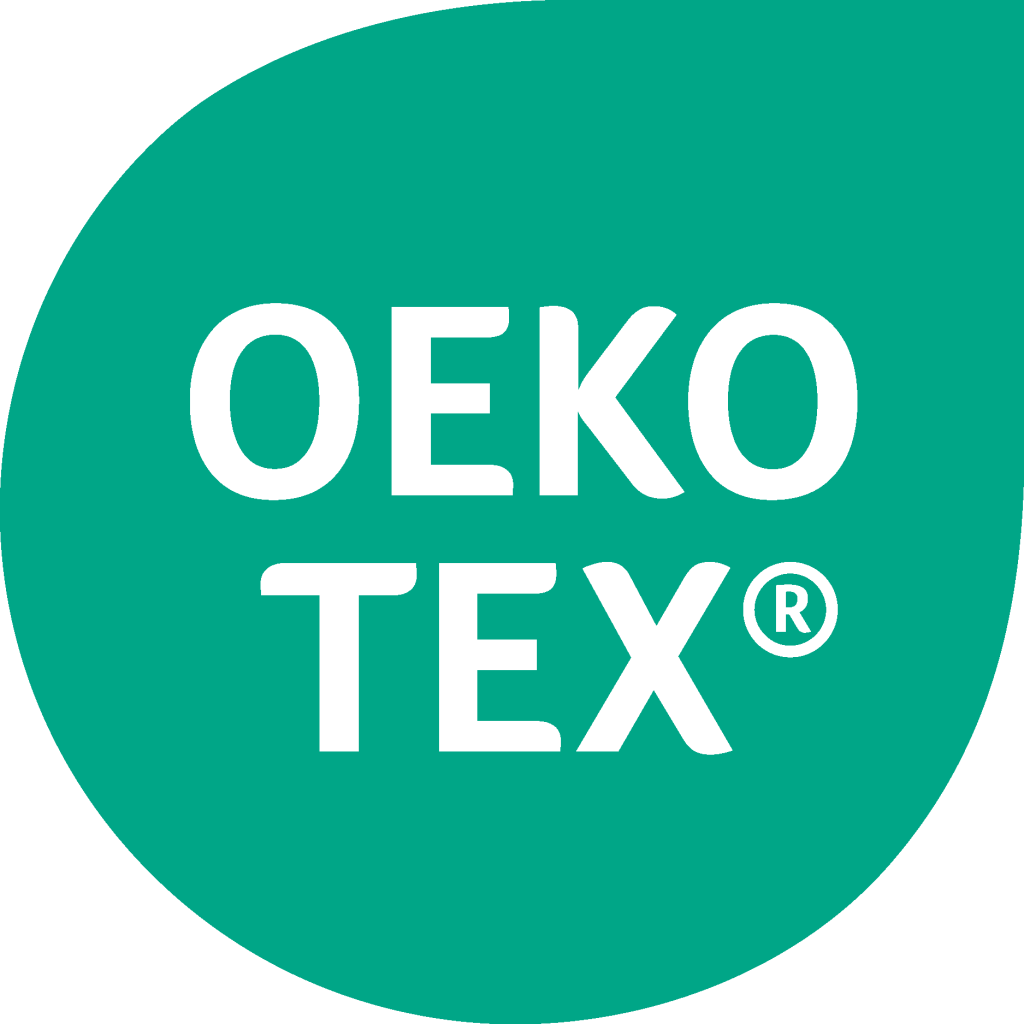
OUR PICK
Wool is the undisputed winner followed by polyester, then nylon.
Winner of the Best Bedroom Carpet
In conclusion, thank you for taking the time to read our bedroom carpet buying guide, we hope it’s made your decision easier. We have learned about the different types of carpet and how each ranks in terms of appearance, price, comfort, durability, and eco friendliness. In your selection process, we think it’s best to rank these factors from most to least important, then reflect on our guides advice. If you’re still unsure, Seek out an experienced sales team to help you make a final decision. If you’re in Porltand, OR, Eco floors can help you.
As promised, we will declare a winner. To aid with our decision, we looked at US home demographics:
- 66% of US households own a pet
- 40% of US households have children under the age of 18
- The avg number of household residents is 2.54
- Less than 10% contain 5 or more residents
- Avg household income = $87,869
- Avg household expenses = $77,280
- This leaves approximately 12% of income for discretionary spending
From this data, we don’t see a majority of households having children, but we do see that ⅔ have pets. We can also see that a household’s leftover income does not leave a lot of room for household upgrades and repairs. This factored heavily in our decision – we feel polyester (ideally a Triexta fiber) has nylon beat in value, as well as stain resistance, comfort, and eco friendliness.
If your household doesn’t have pets, toddlers, and below 4 residents, you may consider choosing wool. Although polyester has wool beat square on value, wool will satisfy an audience that is looking for a more luxurious, unique look, and it will outlast the polyester if maintained properly. For our audience, the Eco Friendly crowd, wool is the clear cut winner.
The Best Carpet for bedrooms
Winner: Polyester, medium cut pile, 45-55oz carpet – Triexta or PET
Runner up: Wool with loop pile
Last Place: Nylon
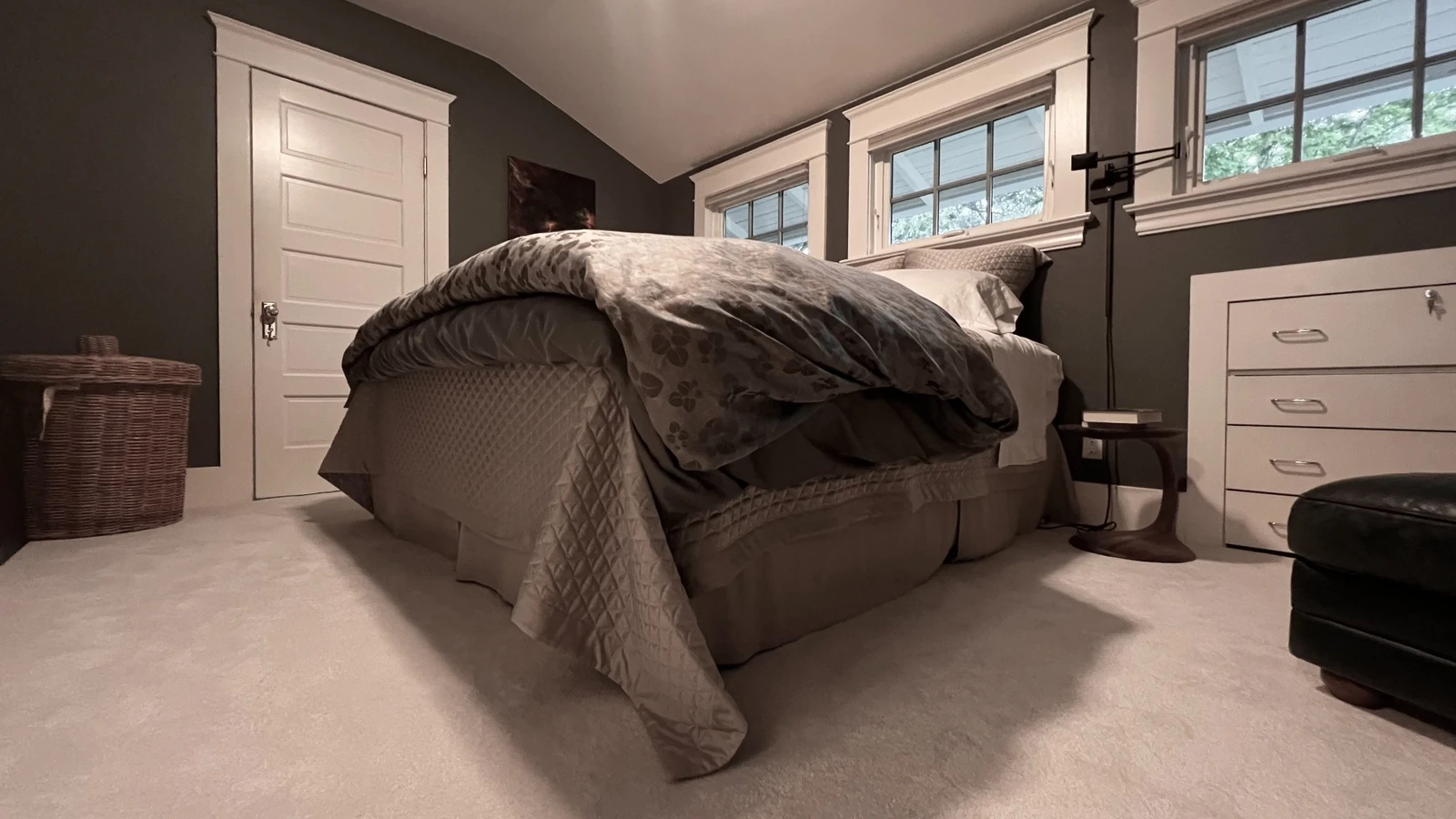
Bedroom Carpet Recommendations
You will need to work with a local store or installer to purchase these.
- Polyester (Triexta): Mohawk Smart Strand Silk – La Jolla Cove II – our price: $34.89/ square yard (SY) https://www.mohawkflooring.com/shop/Carpet/detail/3K96/La_Jolla_Cove_II/775/Sandy?productLine=SmartStrand%20Silk&carpet_types=Texture
- Nylon: Masland – Opalesque – our price: $72.99/ square yard https://www.maslandcarpets.com/products/masland-carpets-in-opalesque
- Wool: Nature’s Carpet – Sequoia: our price: $117.49/ square yard https://www.naturescarpet.com/products/natures-carpet-couture/
Bedroom Carpet Pad
We’ll cover the ins and outs of carpet pad in another article, but for now, this is what we think you should look for:
- Thickness: 7/16”
- Density: 8lb +
- Material: Memory Foam
- Included moisture barrier
- Best Value: Mohawk Smart cushion 1/2″ – our price: $5.99/ square yard (SY) https://www.mohawkflooring.com/products/carpet-cushion
- Best Pad: Healthier Choice 7/16″ Green – our price: $11.70/ square yard (SY) https://www.healthierchoice.com/healthierchoicecushion/hc-green
- Best Wool Pad: Earthweave Enertia – our price: $10.89/ square yard (SY) https://www.earthweave.com/padding
